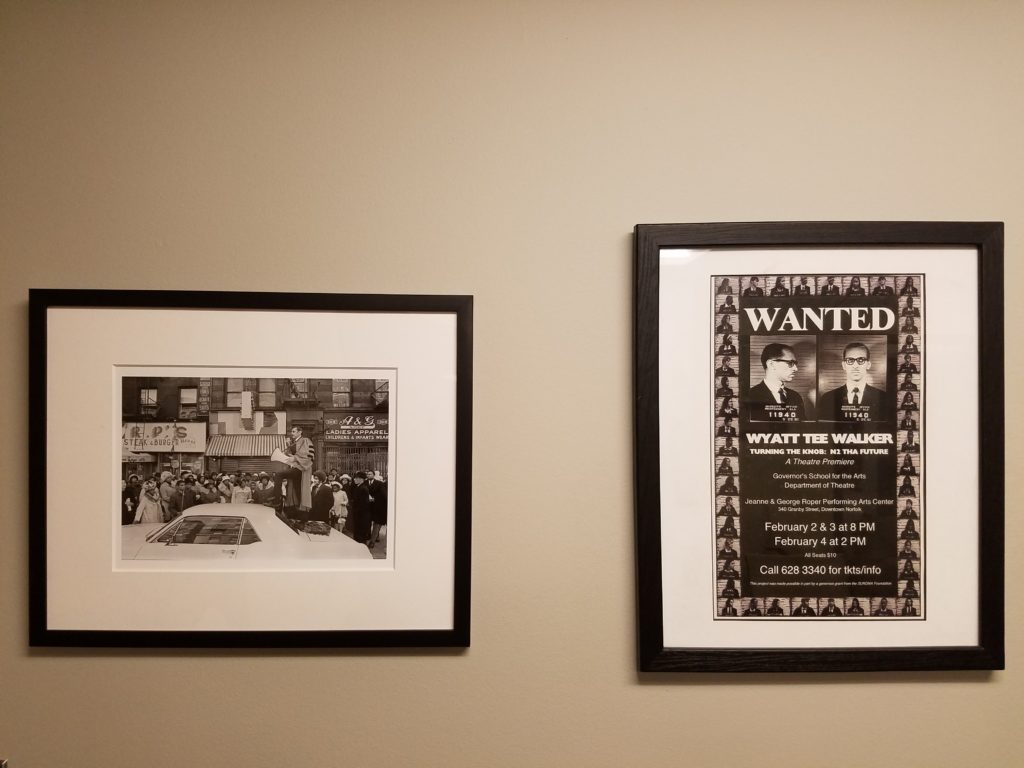(Note: This post was authored by Taylor McNeilly, Processing & Reference Archivist.) You may not be aware, but March 14 isn’t just Pi Day (although you should definitely be having a slice of pie while you read this). March 14 is also National Spider Day, and the University of Richmond – with its proud and prominent mascot, the spider – can’t help but celebrate.
Since this once-a-year holiday happens to fall on #WyattWalkerWednesday this year, I thought I’d take the opportunity to write a different kind of post about the Walker Collection. So instead of focusing on an item I’ve come across processing the Walker Collection, I’m going to focus on what it means for the Walker Collection to have come to the University of Richmond and some of the ways we’re supporting and using the collection.
As I’ve mentioned in previous posts, the Dr. and Mrs. Wyatt Tee Walker Collection is immense. Not only is it comprised of a large amount of material, but that material is itself comprised of a large number of media formats. Many people think of archival collections as manuscript collections, i.e. paper-based collections. And of course, the Walker Collection includes boxes upon boxes of paper materials, including handwritten items, typewritten manuscripts, commercial advertisements, and published materials. But that’s just the tip of the figurative iceberg with the Walker Collection. We have vinyl records, photographic slides, actual photographs, photograph negatives, audio cassettes, VHS tapes, foam-mounted posters, and even some 8mm and 16mm film reels. There are awards made of glass, awards made of wood, awards made of metal, awards made of plastic, and awards made of all different combinations of material. There’s even an award that includes a globe made of different gems and stones. There are ceremonial robes and everyday robes, there’s even an engraved walking stick. There’s a silver tea set, an aluminum cup, and a golf trophy. There are so many different kinds of items in the collection that just identifying them all can be a real challenge (are those Super 8 or Standard 8 film reels? Is this 16mm film an acetate base? Is this award bowl made of stone, ceramic, or something else?)
Luckily, with the Walker Collection’s donation to the University of Richmond, we have the expertise to identify most of these formats right away. Most archivists could do this with a bit of work, but where the Spider Pride comes into the equation is in creating access to these materials. It’s all well and good to know that you have a Super 8 film reel, but how do you allow researchers to view it? How do you preserve the audio cassettes that are already beginning to fade with age while also letting researchers listen to them? The University has the know-how to make these many and varied formats accessible while still preserving the items, and we’re looking into options now to help make this possible as quickly as we can.
But the University of Richmond is, first and foremost, an institute of higher education. And that is how we can fulfill one of the most important of Dr. Walker’s wishes when he donated the collection: using it for education. Dr. Walker was a passionate supporter of education throughout his life, working as a teacher even after he moved to Virginia and retired from preaching. It was his fervent wish that the collection that bears his name be used not just for scholarly research but also for education. And the University of Richmond is uniquely positioned to help fulfill that role of the collection, using it in instruction sessions for classes, potentially lending items to other institutions for display, and someday even digitizing it for more widespread use.
Finally, I would just like to say that much of my Spider Pride comes from my work on the Dr. and Mrs. Wyatt Tee Walker Collection. I am proud to belong to an institution that recognizes and honors the people who have worked so hard to better not just their state or country but the entire world.

